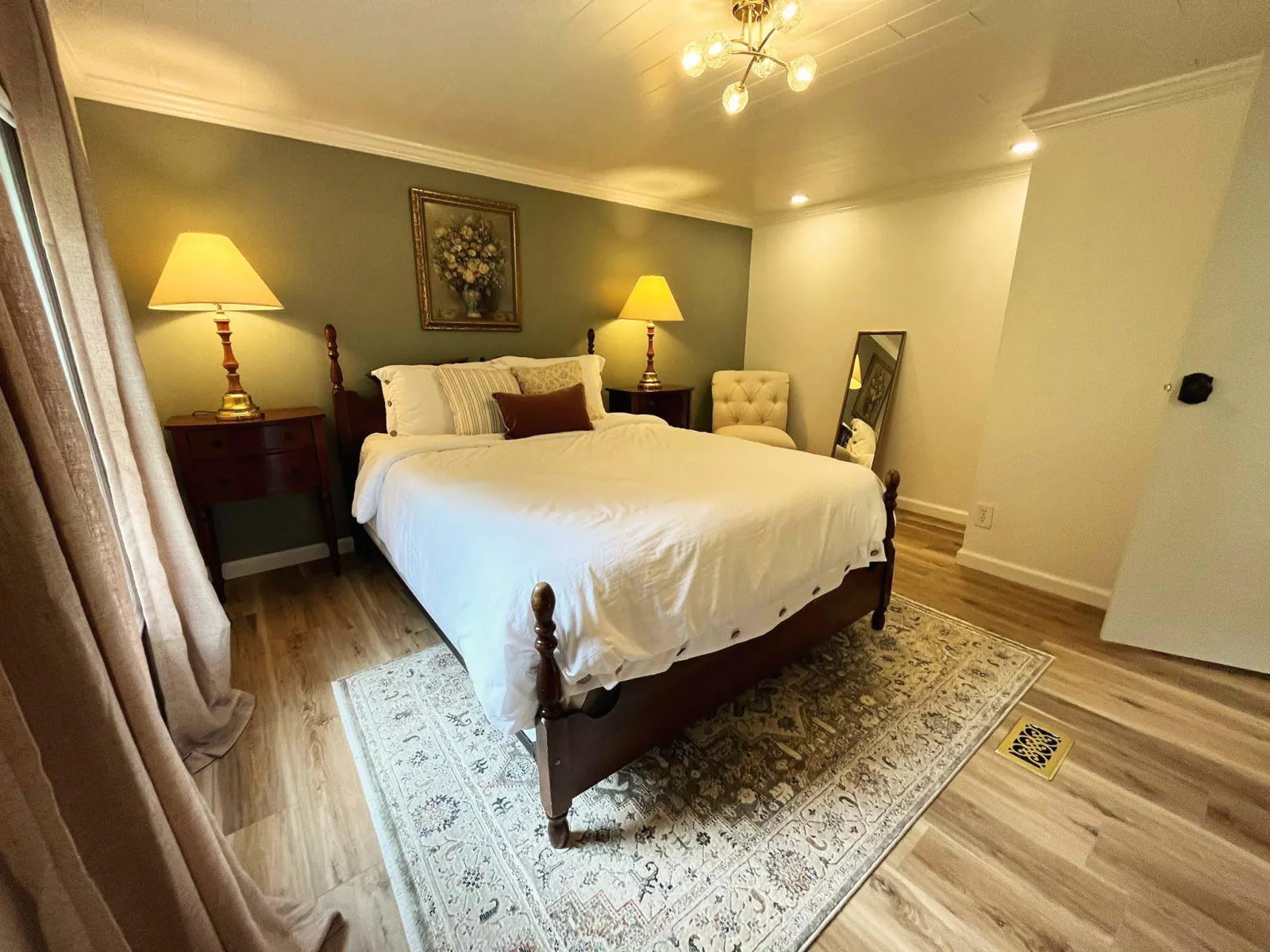Article
Accent walls aren’t about shouting—they’re about focus. The right material, color, and lighting create a calm, elevated backdrop that makes everything else in the room feel more intentional and high-end.
Done well, a feature wall anchors the layout, clarifies sightlines, and gives your furnishings a stage. Below we break down where accent walls make the biggest impact, materials we love, and the design rules that keep the look luxurious—not loud.
“Luxury is clarity. Pick one wall, one story, and execute it perfectly.”
Where an Accent Wall Works Best
Living rooms: Center the feature wall on your main seating arrangement—often the TV/fireplace wall. Frame built-ins or a hearth with a contrasting finish to create depth.
Bedrooms: Behind the headboard is the classic—and for good reason. It visually “caps” the bed and lets bedding textures shine.
Home offices: A composed backdrop elevates calls and keeps visual noise down. Add picture-light wiring or sconces to highlight art or credentials.

Materials That Read “Quiet Luxury”
Paint (matte or eggshell): The simplest path. Deep mid-tones (forest, ink, espresso, clay) add depth without harsh contrast. Matte hides wall texture; eggshell resists fingerprints in high-touch areas.
Limewash or mineral paint: Soft movement and velvety sheen give a plaster-like feel—great in bedrooms and dining rooms.
Applied millwork: Board-and-batten, picture-frame molding, or slender slats (1×2s at consistent spacing) create shadow lines that feel custom. Paint the trim and field the same color for a calm, monolithic look.
Wallpaper or grasscloth: Adds refined texture; choose small-scale patterns for compact rooms and bolder motifs for larger walls.
Stone or brick veneer: Use sparingly—one wall only—paired with simple furnishings to avoid visual clutter.
“If it fights the furniture, it’s the wrong wall—or the wrong material.”
Layout Rules That Keep It Luxurious
Pick the natural focal wall. It should already attract attention: fireplace, headboard, media unit, or a centered window grouping. Avoid walls chopped up by doors or off-center windows.
Center the composition. Align panels, artwork, and lighting with the room’s main axis. Keep margins equal on left/right and top/bottom.
Mind the proportions. Tall walls look great with vertical elements (battens, slats); long, low walls favor horizontal paneling. Leave a clean border at the ceiling and adjacent corners for breathing room.
Color Strategy (That Won’t Age Out)
Start with your fixed finishes—floors, large furniture, stone. Choose a wall color that’s either two shades darker than your base walls or a complementary hue from the same temperature family. Our clients often love deep green or warm clay that pairs with natural wood and brass.
- Calm contrast: Aim for noticeable, not jarring.
- One hero finish: If the wall is textured or patterned, keep furniture and drapery simpler.
- Test with light: Check samples in day and evening light.
Lighting Makes the Look
Wall washers, art lights, and warm 2700K lamps reveal texture and color richness. Add a dimmer so the wall can glow at night while the room relaxes. Place sconces at consistent heights (typically ~60–66″ to the center) and balance left/right.
Common Mistakes (and Quick Fixes)
- Too many accent walls: Keep it to one per space. If rooms connect, let only one “lead.”
- Ignoring scale: Small busy patterns on huge walls can feel chaotic; scale the motif to the wall size.
- Stopping at paint: Simple trim or a ledge can finish the composition and hide ceiling/wall irregularities.
Quick Spec Checklist for Your Quote
- Room photos and wall measurements (width × height)
- Existing wall condition (orange peel, smooth, paneled)
- Material choice (paint, limewash, millwork, wallpaper, veneer)
- Lighting changes (sconces, art lights, dimmers)
- Color direction (deep green, clay, charcoal, or match existing palette)
We design and install accent walls across the Piedmont Triad—Winston-Salem, Greensboro, Mount Airy, and nearby. Want inspiration? Browse our portfolio to see how a focused feature wall can transform a room without a full remodel.